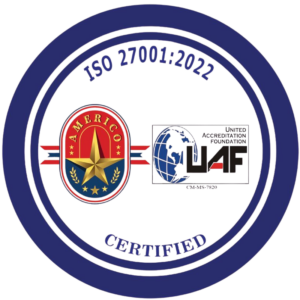Every minute your agents spend on customer service interactions is money out of your pocket. Here’s why:
- it represents paid work time
- it’s an opportunity cost (an agent handling one customer can’t help others or do other tasks)
- contribute to higher overall operational costs
And now, the worst—more than three-quarters of customers (78%) were found to cancel a purchase due to poor customer service.
In this guide, we’ll talk about how your average handle time (AHT) is eating away your profits. We will break down the average handle time definition—from understanding its impact to discussing actionable strategies for customer service improvement.
Understanding the importance of average handle time

Handle times are considered a very crucial metric in customer service. They simply represent the total duration of an interaction between a customer and a service agent. This starts from the point of contact until the time the customer’s inquiry or support ticket has been resolved.
Being aware of industry standards as well as your own team’s handle times is important because these numbers can be used for planning purposes like workforce management and forecasting staffing needs.
What is Average Handle Time (AHT)?

Now if we take the average duration of a customer call (inquiry or request) to closure, you’ll get the average handle time (AHT) of your service team.
This includes the initial call, talk time, hold time, and any after-call work your agents need to complete typically measured in minutes and seconds.
But here’s some real talk: average handle time is more than just a number. It’s an insight into your customer service team’s overall performance. It helps assess efficiency and identify areas for improvement so you can improve customer satisfaction.
According to Krisp (as per data from Talkdesk’s 2021 Global Contact Center KPI Benchmarking Report) these are some of the average handle time benchmarks by industry. (Note that the following excludes the call center agents doing after-call work)
- Retail, eCommerce and consumer goods: 3 minutes, 29 seconds
- Healthcare: 3 minutes, 28 seconds
- Professional services: 3 minutes, 36 seconds
- Financial services and insurance: 4 minutes, 5 seconds
- Transportation and logistics: 4 minutes, 8 seconds
Why does Average Handle Time matter?

If you have a high average handle time, this may mean that customers are experiencing long wait times—and they end up being frustrated. It’s quite possible that customer calls drag on longer than they should. To better picture why average handling time matters to businesses, here’s a list of reasons:
It impacts customer satisfaction
Put simply, the average handle time directly affects the customer experience. While the average handle time alone doesn’t tell the whole story, it’s an important factor in customer satisfaction and agent performance. Long wait times and drawn-out interactions can be frustrating. The longer customers are kept waiting, the less satisfied they become.
And if we’re being frank—that’s not okay in customer service. Continuing down this path will just result in poor customer experience, which will then lead to decreased customer satisfaction. After all, 70% of the customer journey is based on how they’re treated.
It is a clear indicator of efficiency and productivity
The average handling time is a key indicator of how efficiently agents handle the customer inquiries they receive and how efficient they are at resolving customer issues. Lower handle times generally mean agents can serve more customers in less time—increasing overall productivity.
Plus, keeping this metric low also means that your agents can spend time on more complex tasks which increase their value and reduces burnout.
There are corresponding cost implications
Primarily, average handle time also affects labor costs. As longer handling times require more time for employees to manage the same volume of customer interactions. And that could imply increasing your staffing expenses.
Additionally, longer interactions often mean increased infrastructure costs, such as phone bills and technology expenses.
4 factors that influence the Average Handle Time metric

You have to understand that the average handling time is dynamic. It’s fluid and responsive to both internal and external influences. So, let’s foremost agree that average handle time isn’t a static metric but is influenced by several factors like:
1. Skill level of your service agents
Obviously, the skills, experience, and expertise of your customer service agents have a big impact on response times. If they’re very familiar with your products and services, they can diagnose and resolve common issues quickly. They also know the tech and call center software you use like the back of their hands, and this allows them to log and monitor and update queries easily.
Conversely, newbies might still be undergoing agent training to become familiar with your brand. You may agree or disagree, but the key takeaway is experienced agents can handle interactions more efficiently.
2. Complexity of requests from your customers
The nature of customer queries also affects AHT. Simple inquiries can be resolved quickly. But complex issues like technical support concerns naturally require more time and resources. The mix of simple versus complex inquiries can cause AHT to fluctuate.
Here’s where an internal knowledge base can come in handy—it provides your support team with the comprehensive knowledge they need to shorten average talk time and improve customer satisfaction.
3. Tools and technology you use
The quality, efficiency, and user-friendliness of your customer service tools determine how quickly your support team and agents respond to customers—thus influencing your average handle time per call center. So, giving comprehensive training on those tools and choosing the ones that align well with your customer service requirements are very crucial.
4. Your internal processes
Your internal processes and customer service workflows also influence average handling time. The effectiveness of your internal knowledge base can streamline processes because about 20% of the time spent by interaction workers is spent looking for internal information (or finding colleagues who can assist). Also, your routing systems can be bottlenecks and slow down interactions if outdated or if you have no clear escalation protocols.
How to calculate average handle time

Interested to uncover your current average handle time? Good! Because it’s a must for you to understand and optimize your customer service agent performance.
Here’s a simple three-step process of average handle time calculation:
- The first step is to collect the handle times data of all support agents. Just ensure the process covers all customer service channels (phone calls, chat, email).
- Once you’ve collected the necessary data, calculating average handle time is relatively straightforward. The average handle time formula is (Total talk time + Total hold time + Total after-call work) / Total number of interactions. Decide the specific period whether it’s daily, weekly, or monthly.
- Once you’ve calculated your average handle time, it’s crucial to analyze the results within the right context. Look for trends and patterns in your data to identify areas where you can make improvements. For example, if you notice that your average handle time is higher for specific types of inquiries, you can investigate and develop targeted solutions to optimize your customer service operations and then improve your customer satisfaction score.
Strategies to improve AHT

To improve your average handle time, let’s explore some actionable average handle time tips that can prove useful.
Provide effective training programs
First on the list is to invest in comprehensive training programs for your agents. As mentioned earlier, well-trained agents are equipped with the knowledge and skills to handle customer inquiries more efficiently. Therefore, ensure your training covers product knowledge, communication skills, problem-solving techniques, and the use of relevant tools and technologies.
Streamline your processes
Inefficient processes can be a major contributor to high average handle time. So, conduct a thorough review of all your current service workflows. If you identify any bottlenecks or redundancies, eliminate them and automate wherever possible. Standardize scripts for common inquiries and have clear escalation procedures for complex issues to prevent unnecessary delays.
Tip: Implementing a knowledge base or self-service portal can give customers the power to find answers to their questions independently. That can reduce the volume of support tickets.
Leverage technology
In case you’re still not leveraging technology in your customer service landscape, it’s high time to start considering upgrading your tech stack to help you zero in on reducing your average handling time.
- Invest in advanced tools and automation solutions that can streamline your customer service operations especially the repetitive tasks
- Consider implementing CRM systems that can provide call center managers and agents with quick access to customer information and chatbots that can handle simple inquiries so that your agents can focus on more complex aspects of the job.
Enhancing your agent’s communication skills
Well, your service agents must have strong communication skills from the get-go. After all, effective communication is at the heart of efficient customer service. Further enhance it by training your agents to control the flow of conversation politely but firmly, and de-escalate tense situations. Effective questioning strategies also enable agents to gather necessary information so they can provide great customer experiences to each and every customer.
Regular feedback and coaching
That’s right! Regularly provide your agents with feedback on their performance, but be constructive in doing so. First, highlight areas where they excel before the areas where they can improve. You can try to offer coaching and mentorship to help them develop their skills and cope with challenges. And lastly, implement both quantitative metrics and qualitative assessments.
- Quantitative metrics (Operational Data) include First Contact Resolution (FCR) or the number of issues resolved on the first call, and Call Abandonment Rate or the percentage of customers who hang up before speaking to an agent. It’s extremely helpful to set key performance indicators at the start of evaluation periods so you can use these as basis.
- Meanwhile, qualitative assessments (Experience Data) include Customer Satisfaction (CSAT) gauging how satisfied customers are with the service they received—typically on a 1-5 scale, Customer Effort Score (CES) or how much effort a customer had to put in to get their issue resolved, and Customer Feedback that collects open-ended comments and insights from customers about their service experience.
Common challenges when optimizing AHT and how to overcome them

Yes, improving your average handling time is doable. But it’s not without challenges. So, for the sake of transparency, let’s address some of them.
Balancing speed and quality
One of the biggest challenges in reducing average handle time is maintaining a balance between speed and quality. While it’s important to resolve issues quickly, rushing through interactions can lead to errors, misunderstandings, and dissatisfied customers.
To strike the right balance:
- Clearly define your customer service standards and communicate them to your agents.
- Ensure your agents have the knowledge to handle a variety of inquiries efficiently and accurately.
- Regularly review call recordings and customer feedback to see if agents are sacrificing quality for speed. Give recognition and rewards to agents who consistently deliver high-quality service.
Adapting to changing customer needs
Customer expectations are advancing continuously, and your team needs to adapt to keep up. This can be a challenge, especially when you and support team are operating with new products, services, or technologies.
To stay adaptable:
- Keep up-to-date with industry trends, customer feedback, and emerging technologies.
- Provide ongoing training to your agents on new products, services, and technologies.
- Be willing to adjust your processes and procedures as needed to meet changing customer needs.
Dealing with high call volumes
High call volumes can be taxing on your team. You just need effective strategies you can implement to manage peak times. To handle high call volumes:
- Analyze call volume patterns and adjust staffing levels to ensure adequate coverage during peak times.
- Provide customers with self-service resources like knowledge bases, FAQs, call scripts, and conversational chatbots to handle simple inquiries and repeat calls.
- Offer customers the option to receive a callback instead of waiting on hold, reducing their perceived wait time.
Zone in on your Average Handle Time and shorten it to strengthen your customer relationships

Average handle time (AHT) is so critical that this metric can influence the way your customers perceive you and your brand. Remember that improving it is an ongoing process. It isn’t enough that you measure it accurately and regularly—you have to strategize to further shorten it. Then you can transform your customer service into a powerful asset that drives customer satisfaction, boosts agent productivity, and reduces operational costs.
And if your goal is to optimize your service strategy as early as possible, we’ve got you covered. At LTVplus, we’re a flexible extension of your team dedicated to providing only superior customer experience. Book a call and improve your service level today.




